In the ever-evolving landscape of kitchen appliances, the contact grill has emerged as a staple in modern culinary culture. As a testament to this trend, the market for contact grill Original Design Manufacturers (ODMs) has seen significant growth, driven by changing consumer preferences and technological advancements. This article delves into the intricacies of the contact grill ODM sector, exploring the strategies of key players, the impact of e-commerce, and the future outlook for this dynamic market.
Understanding Contact Grill ODM: What It Means for the Market
In the world of kitchen appliances, the term “ODM” stands for Original Design Manufacturer. This concept is particularly significant in the contact grill industry, where innovation and customization play a pivotal role. A contact grill ODM, therefore, refers to a company that designs and produces contact grills based on a client’s specifications, often without the client’s brand name appearing on the final product. This approach has a profound impact on the market, influencing everything from product development to consumer choice. Let’s delve into the intricacies of contact grill ODM and its implications for the market.
The term “contact grill” itself encompasses a variety of cooking appliances designed to cook food by pressing it between two plates that are heated. These devices are popular for their ability to create a seared, charred surface on meats, much like a grill outdoors. The ODM model in this sector involves a manufacturer that specializes in creating these grills with specific features, often tailored to the needs and preferences of a particular client or market segment.
One of the primary benefits of the contact grill ODM approach is the ability to offer a wide range of product variations. Manufacturers can produce grills with different sizes, heat settings, and additional features such as non-stick coatings, adjustable legs, or even built-in thermometers. This flexibility allows clients to cater to diverse consumer needs and preferences, from the home chef looking for a compact, portable grill to a commercial kitchen requiring a high-capacity, industrial-grade model.
The market for contact grills has seen a steady growth, driven by changing lifestyles and an increasing interest in healthy cooking methods. The convenience of contact grilling, which can be done indoors and requires minimal cleanup, has made it a popular choice for busy individuals and families. As a result, the demand for customized contact grill solutions has surged, with ODMs playing a crucial role in meeting this demand.
For manufacturers, becoming a contact grill ODM means entering a highly competitive market where innovation is key. Companies must stay abreast of the latest trends, such as the rise of smart kitchen appliances, which are equipped with digital interfaces and connectivity features. By focusing on design and functionality, ODMs can help their clients differentiate their products in a crowded marketplace.
On the client side, opting for an ODM can be a strategic move. Companies that do not have the in-house capabilities to design and produce appliances can leverage the expertise of an ODM to bring their vision to life. This collaboration can lead to a more efficient product development process, as the ODM can offer insights into manufacturing processes, cost optimization, and quality control.
The relationship between a contact grill ODM and its clients is often built on a strong foundation of communication and trust. Clients provide detailed specifications, and the ODM takes these inputs to create a product that aligns with the client’s brand identity and market strategy. This process requires a deep understanding of both the client’s business goals and the consumer’s needs.
In terms of market dynamics, the contact grill ODM sector is witnessing several trends. One notable trend is the focus on sustainability and eco-friendly materials. As consumers become more environmentally conscious, ODMs are responding by offering grills made from recycled materials or with energy-efficient designs. Additionally, there is a growing emphasis on health and wellness, with ODMs incorporating features that make it easier for consumers to cook nutritious meals at home.
Another critical aspect of the contact grill ODM market is the importance of regulatory compliance and safety standards. Since these appliances are used in homes and commercial kitchens, they must meet stringent safety requirements. ODMs that can provide products that adhere to international and local regulations gain a competitive edge.
The rise of e-commerce has also had a significant impact on the contact grill ODM market. Online sales platforms offer a direct channel to consumers, allowing ODMs to reach a broader audience. This shift has necessitated a greater focus on product branding and marketing, as well as an understanding of online consumer behavior.
Looking ahead, the contact grill ODM market is poised for continued growth. As consumer preferences evolve and new technologies emerge, ODMs will need to be agile and innovative to stay ahead. The key to success will be a combination of technical expertise, market insight, and the ability to adapt to changing trends.
In conclusion, the role of the contact grill ODM is multifaceted, encompassing design, production, and strategic partnership. By understanding the needs of their clients and the market, ODMs can play a crucial role in shaping the future of the contact grill industry.
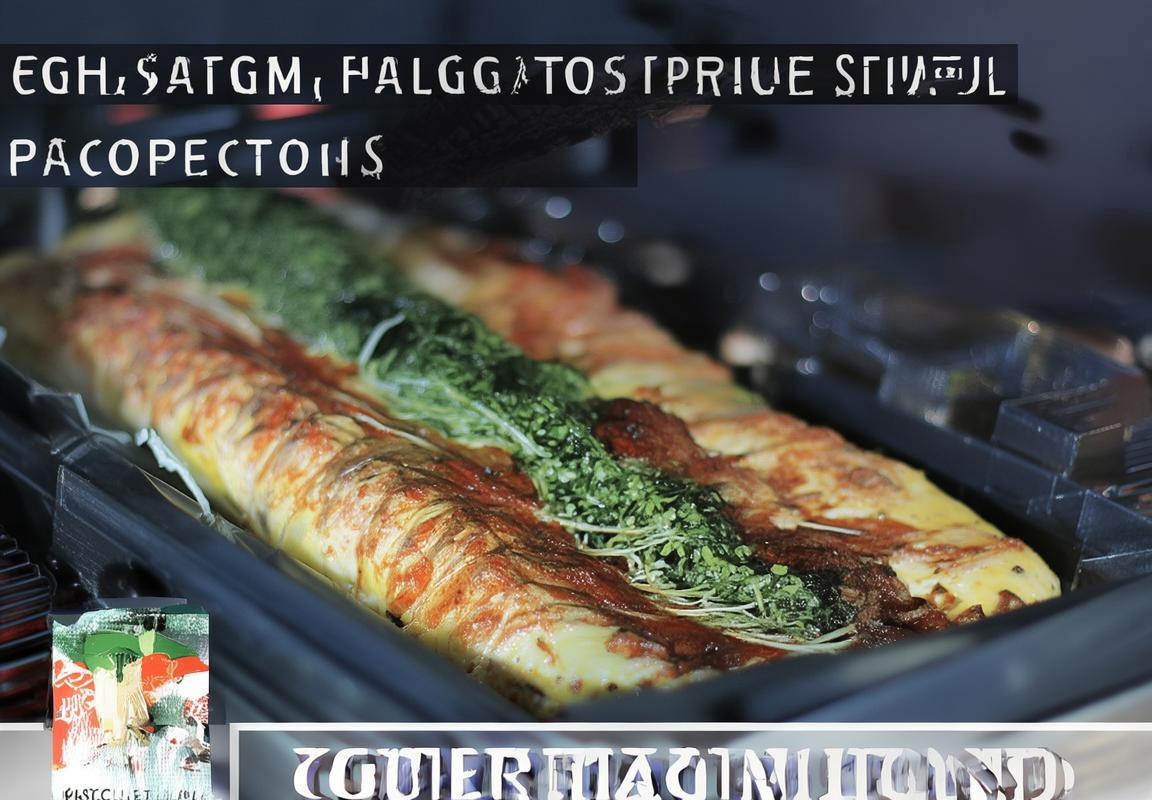
The Evolution of Contact Grills in the Western Markets
The contact grill, a staple in many kitchens across the Western world, has undergone a remarkable evolution since its inception. Once a simple appliance, it has transformed into a versatile cooking tool, reflecting the changing tastes and lifestyles of consumers.
Initially, contact grills were seen as a convenient solution for those seeking an easy way to cook burgers and sandwiches. They were compact, portable, and required minimal effort to use. The early models were often made of aluminum or cast iron, with a single cooking plate that heated up quickly and evenly. However, these early devices were limited in terms of functionality and temperature control.
As time went on, manufacturers began to recognize the potential for innovation in the contact grill market. The introduction of non-stick coatings on the cooking plates made cleaning easier and ensured that food didn’t stick. This improvement was met with positive reception from consumers, who were increasingly interested in appliances that offered both convenience and ease of maintenance.
The next phase of evolution brought about a focus on temperature control. Early contact grills were often criticized for their lack of precision, with users unable to achieve consistent cooking temperatures. To address this, manufacturers started to incorporate thermostats and temperature settings, allowing users to cook different types of food with greater accuracy. This development catered to a broader audience, including those who were interested in grilling vegetables, seafood, and even delicate meats like fish.
Another significant evolution in contact grills was the introduction of dual cooking plates. This feature allowed for the simultaneous cooking of two different types of food, which was particularly appealing to families and individuals who wanted to prepare multiple dishes at once. The dual plates often featured adjustable cooking surfaces, so users could tailor the heat to each side according to their preferences.
In recent years, the contact grill has seen a surge in popularity due to the growing health consciousness among consumers. With the surge in demand for healthier cooking options, contact grills have become a favorite choice for those looking to reduce oil and fat usage. The ability to cook with little to no oil has made these appliances not just a convenience, but also a health imperative.
The design of contact grills has also evolved to cater to a variety of cooking styles and preferences. From classic flat grills to models with grooves and ridges for grill marks, there is a wide range of options available. Some models even come with additional features like reversible plates, which can switch between a flat surface for sandwiches and a textured surface for grilling.
Additionally, the integration of smart technology has brought contact grills into the realm of connected kitchen appliances. With features like Bluetooth connectivity, users can monitor and control their grill from their smartphones, making grilling more accessible than ever before. This technological integration has also led to the development of smart grills that can provide real-time feedback on cooking temperatures and times, ensuring perfect results every time.
The Western markets have seen contact grills evolve from a simple cooking gadget to a versatile tool that can cater to a wide array of culinary needs. This evolution has been driven by consumer demands for convenience, health, and technological innovation. As the market continues to grow, it’s clear that the contact grill will remain a staple in the kitchen, offering new and improved features that enhance the grilling experience.
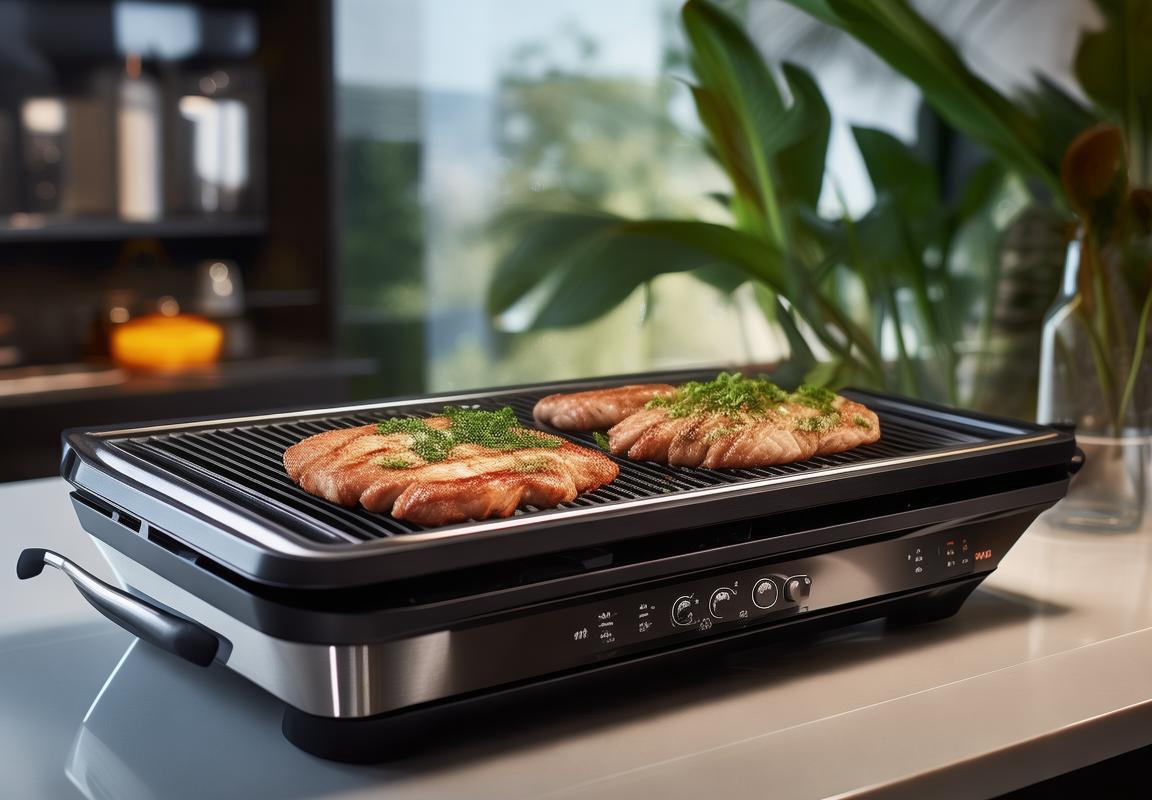
Market Dynamics: Trends and Drivers in Europe and the United States
The market dynamics of contact grills in Europe and the United States are shaped by a combination of consumer trends, technological advancements, and cultural shifts. Here’s an in-depth look at the key trends and drivers influencing this sector.
Grill enthusiasts are increasingly seeking convenience and versatility in their outdoor cooking experiences. The demand for compact, easy-to-use grills has surged, leading to a rise in the popularity of contact grills. These grills offer a sleek design and a smaller footprint, making them a favorite among city dwellers and those with limited outdoor space.
Health consciousness has become a major driving force in the grill market. Consumers are gravitating towards cooking methods that reduce the need for oil, such as contact grilling, which can help minimize fat content. This shift towards healthier cooking options has propelled the growth of contact grills, as they provide a quick and efficient way to cook lean proteins and vegetables with minimal added fat.
Technology has played a significant role in the evolution of contact grills. Modern units often come with features like adjustable heat settings, non-stick surfaces, and digital temperature controls. These innovations have not only improved the cooking experience but have also made contact grills more appealing to tech-savvy consumers who value precision and efficiency in their kitchen appliances.
The rise of e-commerce has revolutionized the way consumers purchase kitchen appliances, including contact grills. Online marketplaces have made it easier for manufacturers to reach a wider audience and for consumers to compare prices and read reviews. This has led to increased competition, driving innovation and better pricing for consumers.
Cultural trends have also influenced the contact grill market. For instance, the growing popularity of outdoor dining experiences has spurred the demand for portable grills that can be taken to parks, beaches, or picnics. This has opened up new opportunities for contact grill manufacturers to cater to these niche markets.
Environmental concerns are another driver in the market. As consumers become more aware of their carbon footprint, there’s an increasing preference for energy-efficient appliances. Contact grills that consume less electricity and have longer lifespans are becoming more attractive to environmentally conscious buyers.
Innovation in materials has also had a significant impact. The use of high-quality, durable materials in contact grill construction has extended the lifespan of these products and improved their performance. Stainless steel and porcelain-coated surfaces are now standard, offering a sleek look and long-lasting durability.
The integration of smart technology in contact grills is gaining traction. Features like Bluetooth connectivity for remote temperature control and smartphone apps for monitoring cooking progress are becoming more common. These advancements cater to the needs of tech-savvy consumers who want to bring the convenience of smart appliances to their outdoor cooking experiences.
The market for contact grills in Europe and the United States is also influenced by demographic changes. An aging population, for example, may have different needs and preferences compared to younger consumers. This has prompted manufacturers to create grills that are easier to use and maintain, catering to a wider range of age groups.
Lastly, the trend towards gourmet cooking has spurred the demand for specialized contact grills. These include models designed for specific types of food, such as flatbreads or kebabs, as well as those that offer unique cooking surfaces like cast iron or ceramic plates. This niche market has opened up new avenues for growth and innovation within the contact grill sector.
In conclusion, the market dynamics of contact grills in Europe and the United States are driven by a variety of factors, from consumer health and technology to cultural and environmental trends. As these drivers continue to evolve, so too will the contact grill market, offering new opportunities for manufacturers and consumers alike.
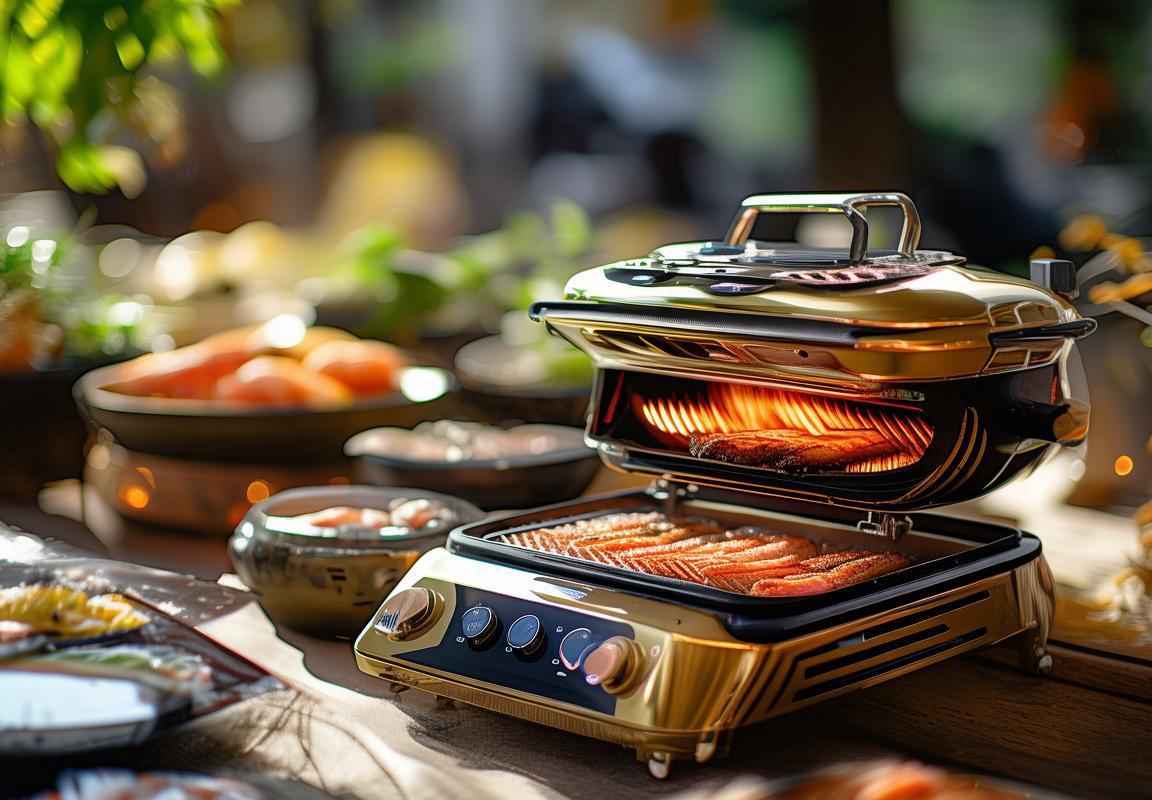
The Role of ODMs in Shaping the Contact Grill Landscape
The evolution of contact grills in the Western markets has been marked by several significant trends and drivers, each playing a pivotal role in shaping the landscape of this industry. From technological advancements to changing consumer preferences, these factors have collectively influenced the direction and growth of contact grills in Europe and the United States.
Technological innovation has been a driving force behind the rise of contact grills. Early models, which simply pressed food between two heating elements, have been replaced by grills with variable temperature settings, adjustable heat levels, and non-stick surfaces. These improvements have made grilling more convenient and accessible, attracting a wider audience.
The rise of health-conscious consumers has also played a substantial role. Contact grills offer a healthier alternative to traditional grilling methods, which often result in higher fat content. By using contact grills, users can reduce the amount of oil used and enjoy a leaner, lower-fat meal. This trend has been particularly strong in Europe, where there is a strong emphasis on wellness and healthy eating habits.
Another significant driver has been the growth of outdoor living spaces and the popularity of grilling as a social activity. As homeowners invest in patios, decks, and outdoor kitchens, the need for versatile grilling solutions has increased. Contact grills, with their compact size and ease of use, have become a staple in these outdoor settings, contributing to their growing popularity.
In Europe, the contact grill market has been further driven by cultural factors. For instance, countries like Germany and Italy have a rich culinary tradition that includes various grilling techniques. Contact grills provide a quick and easy way to replicate these techniques in the home kitchen, allowing consumers to enjoy authentic flavors without the need for a traditional barbecue setup.
Similarly, in the United States, the convenience of contact grills has made them a popular choice for busy households. The compact nature of these grills means they can be stored away when not in use, making them ideal for small kitchens or apartments. Additionally, the portability of some models has led to a rise in outdoor grilling on balconies, terraces, and camping trips.
ODMs (Original Design Manufacturers) have played a crucial role in the shaping of the contact grill landscape. By offering custom designs and specialized manufacturing capabilities, ODMs have allowed brands to differentiate their products and meet the evolving demands of consumers. This collaboration has led to a variety of contact grill designs, including countertop models, portable units, and even built-in grills for outdoor kitchens.
One of the key advantages of working with ODMs is the ability to innovate rapidly. These manufacturers often have a deep understanding of market trends and consumer needs, enabling them to develop new products that resonate with the target audience. This agility is particularly important in a fast-paced market like the contact grill industry, where staying ahead of the curve can mean the difference between success and obsolescence.
Moreover, ODMs provide a cost-effective solution for brands looking to enter the market or expand their product line. By outsourcing the manufacturing process, companies can focus on marketing, distribution, and other strategic activities, knowing that the quality and design of their products are in capable hands.
Another important aspect of ODM collaboration is the ability to offer customization. Brands can work with ODMs to develop unique features, such as specific temperature controls, power sources (including induction and electric), or even integrated smoking capabilities. This level of customization allows brands to cater to niche markets and create a competitive edge.
In terms of materials and construction, ODMs have also pushed the boundaries of what is possible in contact grill design. From the use of advanced metals for durability and even heating to eco-friendly materials that appeal to environmentally conscious consumers, ODMs have been instrumental in driving innovation.
The rise of smart technology has further expanded the capabilities of contact grills. ODMs have been at the forefront of integrating smart features, such as Wi-Fi connectivity and remote control, into contact grill designs. These advancements not only enhance the user experience but also open up new marketing opportunities for brands looking to appeal to tech-savvy consumers.
In conclusion, the role of ODMs in shaping the contact grill landscape cannot be overstated. Through their ability to innovate, customize, and meet the evolving demands of consumers, ODMs have been pivotal in driving the growth and diversification of the contact grill market. As the industry continues to evolve, it is likely that ODMs will continue to play a key role in leading the way towards new and exciting innovations.
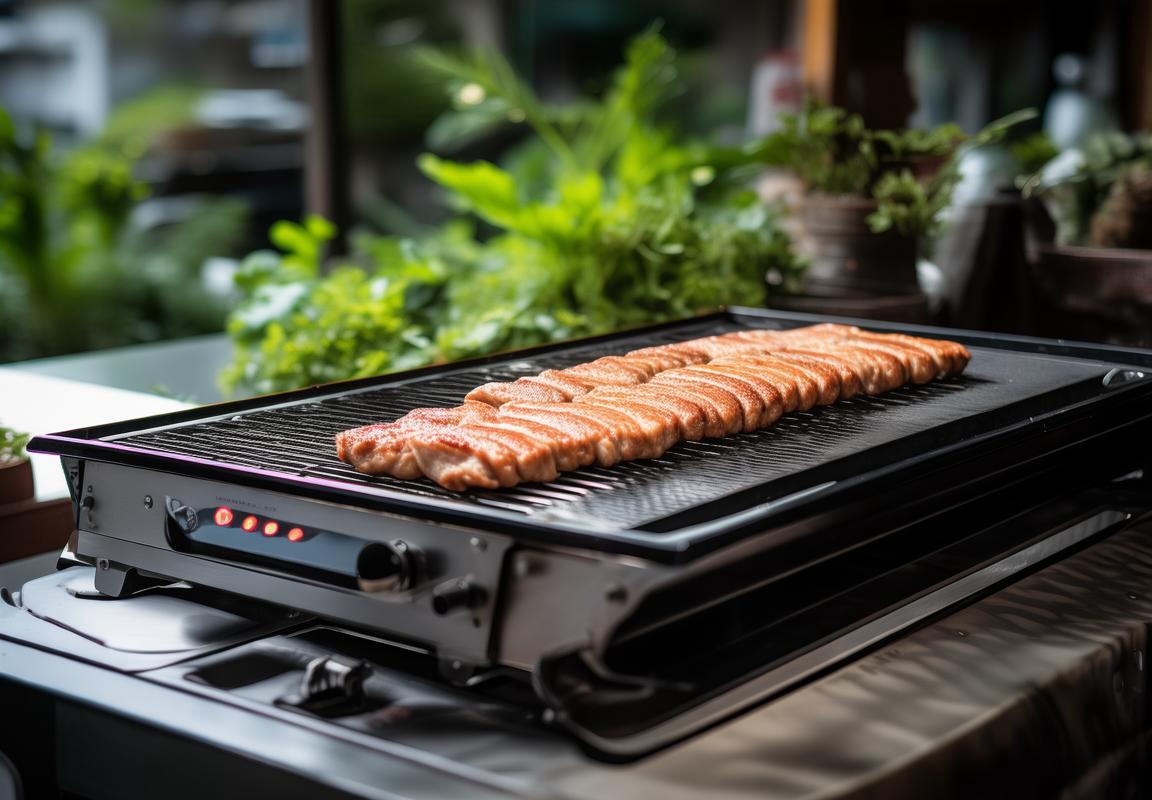
Key Players and their Strategies in the Contact Grill ODM Sector
The contact grill ODM sector is a bustling arena where a handful of key players have carved out a niche for themselves, each with their unique strategies and approaches. Here’s a closer look at some of the major players and the tactics they’ve employed to thrive in this competitive market.
Innovation at the Core: The story of ODM success often begins with a relentless focus on innovation. Companies like Midea and SMEG have invested heavily in research and development, pushing the boundaries of what a contact grill can offer. By introducing advanced technologies and sleek designs, these brands have set the stage for others to follow.
Customization as a Competitive Edge: One of the standout strategies in the contact grill ODM sector is the emphasis on customization. Brands such as Electrolux and Breville have capitalized on the desire for personalized kitchen appliances by offering a range of contact grill models with various cooking surface sizes and materials. This not only caters to diverse consumer needs but also positions these brands as specialists in tailored solutions.
Global Expansion: The expansion into international markets has been a pivotal strategy for many contact grill ODMs. Companies like Fagor and Gaggenau have leveraged their established presence in Europe to enter the North American market, adapting their product lines to align with local tastes and preferences. This aggressive move into new territories has helped them gain a significant market share.
Strategic Partnerships: Collaborating with leading retailers and brands has been a strategic move for ODMs like Kenmore and Kitchenaid. By forming partnerships, these companies have been able to integrate their contact grills into premium kitchen appliance collections, enhancing their brand visibility and credibility. This strategy also allows them to tap into established customer bases and distribution channels.
Marketing and Branding: Effective marketing and branding have played a crucial role in the success of contact grill ODMs. Companies like Duxtop and Hamilton Beach have invested in strong branding initiatives that resonate with consumers, emphasizing the convenience and versatility of their products. Through targeted advertising campaigns and social media engagement, these brands have managed to stand out in a crowded market.
Quality Control: A commitment to quality is non-negotiable in the contact grill ODM sector. Brands like Breville and Cuisinart have built their reputation on delivering high-quality products that are reliable and durable. By maintaining strict quality control measures throughout the manufacturing process, these companies ensure that their products meet the highest standards, which in turn fosters customer loyalty.
Adaptation to Consumer Trends: Keeping a pulse on consumer trends is vital for ODMs. Brands such as Sunbeam and Presto have successfully adapted their product lines to include features like non-stick surfaces, adjustable heat settings, and easy-to-clean designs. By anticipating and meeting evolving consumer demands, these companies have maintained a competitive edge.
Sustainability Initiatives: With the growing awareness of environmental issues, ODMs like Danby and T-fal have started incorporating sustainability into their strategies. This includes using eco-friendly materials and reducing energy consumption in their appliances. By aligning with sustainability goals, these brands appeal to environmentally conscious consumers and position themselves as responsible corporate citizens.
E-commerce and Direct-to-Consumer Sales: The rise of e-commerce has opened new avenues for contact grill ODMs. Brands like Instant Pot and NuWave have leveraged online platforms to offer direct-to-consumer sales, cutting out the middleman and passing on savings to the customers. This direct engagement with consumers has allowed these brands to gather valuable feedback and quickly respond to market changes.
Continuous Improvement: The success of contact grill ODMs is also attributed to their commitment to continuous improvement. By regularly updating their product lines and staying abreast of new technologies, companies like Black & Decker and Breville have managed to keep their offerings fresh and relevant. This approach ensures that they remain at the forefront of the market, ready to address the next wave of consumer needs.
In conclusion, the key players in the contact grill ODM sector have employed a mix of innovation, customization, strategic partnerships, effective marketing, quality control, trend adaptation, sustainability, e-commerce, and a commitment to continuous improvement to shape the landscape of this dynamic market. Their diverse strategies have allowed them to capture market share and build strong, enduring brands.
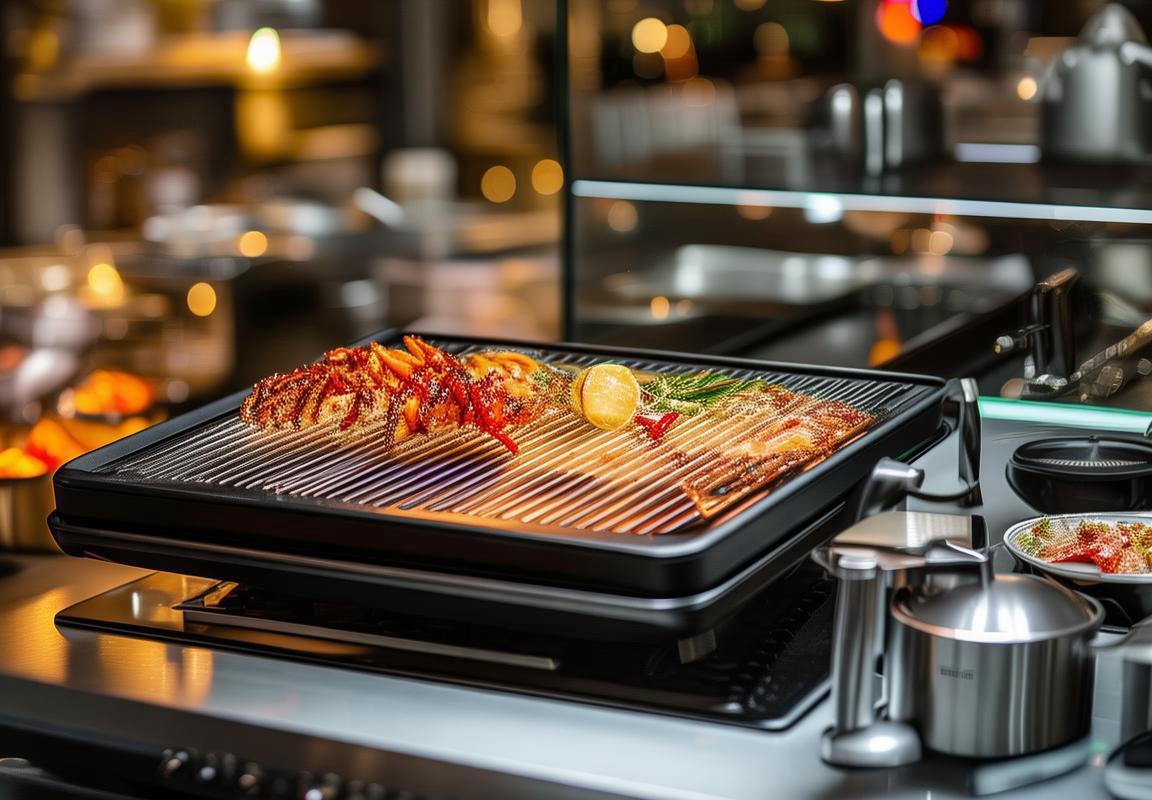
Consumer Preferences and Innovations in Contact Grill Design
Consumer preferences in the contact grill market have been significantly shaped by evolving lifestyle trends, health consciousness, and technological advancements. Innovations in design have responded to these shifts, aiming to enhance usability, efficiency, and user experience. Here’s a closer look at how these factors are influencing contact grill design.
-
Simplicity and Clean DesignConsumers are increasingly drawn to products that offer simplicity in design and operation. Contact grills with sleek, minimalistic aesthetics are gaining popularity, as they not only look modern but also make for easy cleaning and maintenance. The emphasis on a clean design is also a reflection of the growing preference for kitchen spaces that are both visually appealing and functional.
-
Ease of UseOne of the key consumer demands is ease of use. Modern contact grills come with intuitive interfaces, including digital controls and preset cooking modes, which cater to users of all skill levels. Touchscreen interfaces, for instance, have replaced traditional dials and switches, making it easier for users to adjust temperature and cooking times with a simple touch.
-
Health and Wellness FocusThe health-conscious consumer segment is driving the demand for contact grills that can cook food with minimal oil, thus promoting healthier eating habits. Non-stick surfaces and adjustable heat settings are becoming standard features, allowing users to grill food with less fat while still achieving that perfect sear.
-
Technology IntegrationSmart features are becoming more common in contact grill design. Integration with smartphones or smart kitchen systems allows users to control their grills remotely, monitor cooking progress, and even receive alerts about preheating or cooking completion. This technological integration not only adds convenience but also appeals to tech-savvy consumers who expect their kitchen appliances to be as connected as their other devices.
-
VersatilityConsumers today seek versatility in their appliances, and contact grills are no exception. New designs include features that allow for different cooking methods such as grilling, flipping, and even panini pressing. These multifunctional grills can save space and cater to a wider range of cooking preferences, from the traditionalist to the adventurous foodie.
-
Safety and Child-Proof FeaturesWith safety being a top priority, manufacturers are incorporating child-proof locks and non-slip bases into their contact grill designs. These features not only protect young children from accidents but also give peace of mind to busy homeowners who want to prevent any mishaps while cooking.
-
Material and Build QualityConsumers are also paying more attention to the materials and build quality of their contact grills. High-quality stainless steel and durable cooking surfaces are preferred, as they offer better heat distribution, longer lifespans, and a more robust feel. The weight and portability of the grill are also considered, as many consumers look for appliances that can be easily moved or stored when not in use.
-
Sustainability and Eco-Friendly PracticesSustainability is a growing concern, and this extends to kitchen appliances. Contact grill manufacturers are responding by using recycled materials, minimizing packaging, and ensuring that their products are energy-efficient. Eco-friendly practices not only appeal to environmentally conscious consumers but also align with broader corporate social responsibility goals.
-
Customization and PersonalizationPersonalization is another trend that’s influencing contact grill design. Some brands are offering customization options, such as interchangeable cooking plates and accessories, allowing consumers to tailor their grills to their specific needs and preferences.
-
Health Monitoring and Cooking PerformanceFinally, innovations in health monitoring are making their way into contact grill design. Some models now include features that can track cooking temperatures and times, ensuring that food is cooked to perfection. This not only helps consumers achieve better cooking results but also supports healthier eating habits.
These consumer preferences and design innovations are shaping the contact grill market, with manufacturers continually pushing the boundaries of what’s possible in the realm of outdoor and indoor grilling appliances.

Regulatory Compliance and Safety Standards: A Must for ODMs
The contact grill industry has evolved significantly over the years, with a strong emphasis on safety and regulatory compliance. As Original Design Manufacturers (ODMs) play a pivotal role in crafting these kitchen appliances, ensuring that they meet stringent safety standards is non-negotiable. Let’s delve into the importance of these factors and how ODMs navigate the complexities of regulatory landscapes.
In the United States, the Food and Drug Administration (FDA) sets the bar high for kitchen appliances, including contact grills. ODMs must adhere to these guidelines to ensure their products are safe for consumers. This involves rigorous testing for potential hazards such as electrical shock, fire risk, and chemical emissions. The FDA’s stringent requirements often translate into more expensive production costs, but they are a necessary evil for maintaining consumer trust.
Similarly, in Europe, the European Union’s (EU) General Product Safety Directive (GPSD) and the Low Voltage Directive (LVD) govern the manufacturing of contact grills. These directives ensure that products are safe, do not pose a risk of electric shock, and meet environmental standards. ODMs working in this region must be well-versed in these regulations and often collaborate with local experts to navigate the intricacies of European compliance.
Safety standards are not just about legal requirements; they are about protecting consumers. A contact grill that does not comply with safety standards can lead to severe consequences, including injury or even death. ODMs recognize this and invest heavily in research and development to create products that not only meet but often exceed these standards. This commitment to safety is reflected in the design, materials used, and the manufacturing process.
Material choice is a critical aspect of ensuring compliance. ODMs must use flame-retardant materials and heat-resistant plastics that can withstand the intense heat of cooking without releasing harmful substances. The use of high-quality components not only enhances safety but also contributes to the longevity of the product, reducing the likelihood of recalls due to manufacturing defects.
Testing is another cornerstone of regulatory compliance. ODMs subject their contact grills to a variety of tests to ensure they meet safety standards. These include electrical safety tests, thermal shock tests, and material stability tests. The frequency and thoroughness of these tests can vary, but the common denominator is that they must be thorough and comprehensive to ensure that the final product is safe.
In addition to government regulations, ODMs must also consider safety standards set by third-party organizations. Certifications like UL (Underwriters Laboratories) and CE (Conformité Européenne) are highly respected and often required for market entry. These certifications provide an additional layer of assurance to consumers that the product has been independently evaluated and meets safety requirements.
The role of ODMs in shaping the contact grill landscape is not just about manufacturing; it’s about being proactive in addressing safety concerns. This includes staying updated on the latest regulations and technological advancements in safety. ODMs often work closely with regulatory bodies and industry experts to anticipate changes and adjust their manufacturing processes accordingly.
Moreover, the demand for eco-friendly and sustainable products has led ODMs to explore alternative materials and manufacturing methods. This shift is not just about reducing environmental impact but also about enhancing the safety profile of contact grills. For instance, the use of biodegradable materials and energy-efficient manufacturing processes can contribute to a greener product lifecycle.
In conclusion, regulatory compliance and safety standards are at the forefront of the contact grill ODM sector. ODMs must navigate a complex web of regulations, invest in rigorous testing, and use high-quality materials to ensure that their products are safe for consumers. This commitment to safety not only protects consumers but also builds a strong reputation for the brand and the ODM itself.

The Impact of E-commerce on Contact Grill Sales and Distribution
In the rapidly evolving landscape of contact grill sales and distribution, e-commerce has emerged as a pivotal force, reshaping how these appliances reach consumers. The digital marketplace has not only expanded the customer base but has also introduced new challenges and opportunities for Original Design Manufacturers (ODMs) in the sector.
The rise of online platforms has democratized access to contact grills, allowing consumers from diverse geographic locations to explore and purchase a wide array of products. This shift has been particularly pronounced in Europe and the United States, where e-commerce has become deeply integrated into daily life. Online marketplaces like Amazon, eBay, and specialized kitchen appliance websites have become go-to destinations for consumers seeking the latest in grilling technology.
One of the most significant impacts of e-commerce on contact grill sales is the increased competition. ODMs must now compete not just with established brands but also with a plethora of smaller, niche players who offer unique features or competitive pricing. This competition has forced ODMs to innovate in terms of design, functionality, and customer service to stand out in an increasingly crowded marketplace.
The convenience of online shopping has also altered consumer expectations. Customers now demand seamless browsing experiences, detailed product information, and quick delivery. ODMs have had to adapt by optimizing their online presence, ensuring that their products are well-represented with high-quality images, detailed descriptions, and customer reviews. This shift has necessitated a closer integration between product development and digital marketing teams.
Moreover, e-commerce has introduced new distribution models. While traditional retail channels remain important, ODMs are increasingly turning to dropshipping and direct-to-consumer (DTC) models. These models reduce inventory costs and allow for more agile responses to market demands. However, they also require ODMs to manage logistics and shipping efficiently, often in collaboration with third-party logistics providers.
The rise of e-commerce has also brought about a heightened focus on sustainability. Consumers are more likely to support brands that demonstrate environmental responsibility, including eco-friendly packaging and carbon-neutral shipping options. ODMs must consider these factors in their supply chain management to remain competitive.
In the realm of contact grill sales, the data-driven insights provided by e-commerce platforms are invaluable. ODMs can analyze customer behavior, preferences, and purchasing patterns to refine their product offerings and marketing strategies. This data-driven approach allows for targeted product development, such as the introduction of features that are in high demand or the elimination of less popular ones.
The impact of e-commerce on contact grill sales and distribution is not without its challenges. ODMs must navigate complex international regulations, handle customs and import/export procedures, and ensure compliance with varying safety standards across different markets. This complexity requires a robust global supply chain and a keen understanding of local market dynamics.
Another critical aspect is the rise of social media and influencer marketing. ODMs are leveraging these platforms to create buzz around their products, often through collaborations with popular chefs and influencers who can showcase the benefits of contact grills. This form of marketing has proven to be highly effective in reaching a younger, tech-savvy audience.
In conclusion, e-commerce has revolutionized the way contact grills are sold and distributed. ODMs must embrace this digital transformation, leveraging the opportunities it presents while addressing the challenges that come with it. By staying agile, innovative, and customer-focused, ODMs can thrive in this dynamic and ever-growing market.

Predictions for the Future: Growth Opportunities and Challenges
The contact grill market has seen a surge in innovation, driven by changing consumer preferences and technological advancements. Brands are constantly seeking to differentiate themselves in a crowded market, and this pursuit has led to a variety of strategies and products. Here’s a look at some of the key players and their approaches within the Contact Grill Original Design Manufacturer (ODM) sector.
In Europe, names like Tefal and Breville have long been associated with high-quality kitchen appliances, and they’ve leveraged this reputation to expand their contact grill offerings. Tefal, for instance, has focused on energy efficiency and ease of use, while Breville has emphasized smart features and sleek design. These brands have successfully positioned themselves as leaders in the market by continuously refining their product lines.
On the other side of the Atlantic, American brands like George Foreman and Char-Broil have a strong presence. George Foreman, known for its flat-top grills, has expanded into the contact grill category with products that emphasize health and convenience. They’ve introduced models with removable plates for easy cleaning and cooking at lower temperatures to reduce smoke and fat. Char-Broil, on the other hand, has a range of contact grills that cater to different budgets and cooking needs, from simple models to those with advanced features like temperature control and non-stick surfaces.
Some ODMs have carved out a niche by specializing in certain aspects of contact grill design. For example, there are companies that focus on the development of advanced heating elements, ensuring even cooking across the grill surface. Others excel in the design of ergonomic handles and user interfaces, making the cooking experience more intuitive and user-friendly. These specialized ODMs often supply their products to major brands, allowing them to focus on their core competencies while benefiting from the expertise of these niche suppliers.
Collaboration between ODMs and brands is also characterized by a strong emphasis on research and development. This partnership is crucial for keeping up with consumer trends and technological breakthroughs. Brands like DASH and Hamilton Beach have been known to work closely with ODMs to bring affordable yet innovative contact grills to market. These collaborations often result in products that are not only functional but also designed with the latest safety and environmental considerations in mind.
The strategies employed by these key players in the contact grill ODM sector can be categorized into a few distinct approaches. Some brands focus on brand loyalty and heritage, using their established name to attract customers to new products. Others invest heavily in marketing and advertising, highlighting the unique features and benefits of their contact grills. There are also brands that take a more direct approach, offering a wide range of products at various price points to cater to different consumer segments.
Innovation in contact grill design is another key strategy. Brands are constantly seeking to improve the cooking experience by introducing features like variable heat settings, digital temperature controls, and even Bluetooth connectivity. These innovations not only enhance the usability of the product but also provide a competitive edge in the market.
As the market for contact grills continues to grow, so does the importance of customer feedback and market research. ODMs and brands are increasingly relying on data analytics to understand consumer preferences and to tailor their products accordingly. This customer-centric approach has led to the development of contact grills that not only meet but also exceed consumer expectations.
The future of the contact grill market looks promising, with several growth opportunities on the horizon. One such opportunity is the integration of smart technology, which could lead to contact grills that offer even more convenience and control to the consumer. Additionally, as health and wellness become increasingly important, there is a potential for growth in eco-friendly and low-fat cooking solutions.
However, challenges remain. Competition is fierce, and the entry of new players with innovative products can disrupt the market dynamics. ODMs and brands must be prepared to adapt quickly to changing consumer needs and technological advancements. They must also navigate the complexities of global supply chains and comply with a variety of regulatory standards.
In conclusion, the key players in the contact grill ODM sector are employing a mix of brand strategy, innovation, and customer focus to stay ahead in a rapidly evolving market. As the industry continues to grow, these strategies will be crucial in overcoming challenges and capitalizing on new opportunities.
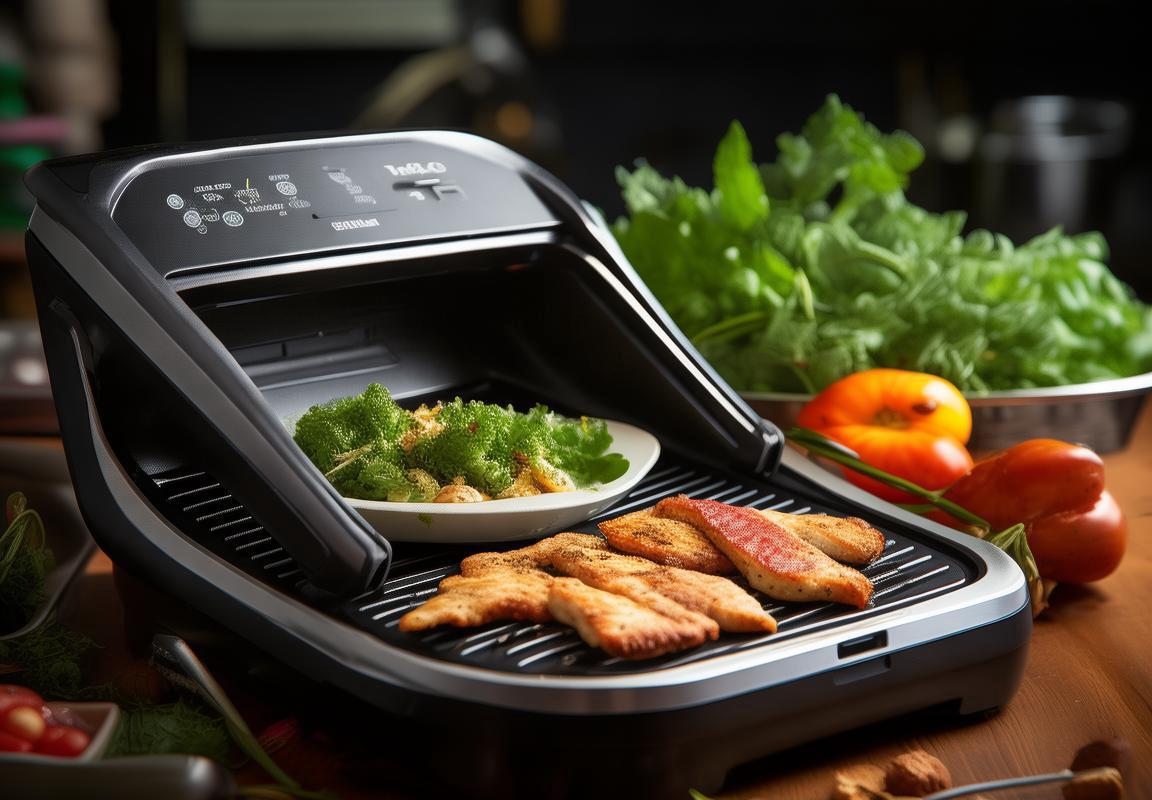
Conclusion: Navigating the Contact Grill ODM Landscape for Success
The contact grill ODM landscape is a dynamic and competitive field, where success hinges on a blend of market insight, innovative design, and strategic partnerships. To navigate this landscape effectively, companies must understand the intricacies of the market and the evolving needs of consumers. Here are some key considerations that can guide ODMs toward success in the contact grill market.
In the realm of contact grill ODMs, the emphasis on quality and functionality remains paramount. Customers seek products that not only cook food efficiently but also do so with minimal mess and effort. This demand has spurred a wave of innovations, from adjustable heat settings to non-stick surfaces, each aimed at enhancing the cooking experience.
The integration of smart technology has become a significant trend in the contact grill ODM sector. With the rise of the Internet of Things (IoT), ODMs are integrating connectivity features into their grills, allowing users to monitor and control their cooking processes remotely. This shift not only caters to the tech-savvy consumer but also offers a level of convenience that traditional grills cannot match.
ODMs must also pay close attention to the environmental concerns of their customers. As sustainability becomes a more pressing issue, there’s a growing preference for energy-efficient appliances. Eco-friendly materials and designs that reduce waste are becoming increasingly important in the contact grill market.
In terms of market trends, the contact grill sector has seen a rise in the demand for versatile and multifunctional grills. Consumers are looking for devices that can serve multiple purposes, such as searing, toasting, and even baking. ODMs that can offer a diverse range of functionalities within a single unit are likely to gain a competitive edge.
One cannot underestimate the power of branding and marketing in the contact grill ODM sector. Companies that have established strong brands are able to command premium pricing and maintain customer loyalty. Effective marketing strategies, including social media campaigns and influencer partnerships, can significantly boost sales and brand recognition.
Strategic partnerships are also a cornerstone of success for contact grill ODMs. Collaborating with retailers and distributors can help ODMs gain access to new markets and customer segments. By aligning with key players in the industry, ODMs can leverage their expertise and resources to expand their product offerings and distribution channels.
Customer service and support are often overlooked but are crucial in the contact grill ODM sector. A reputation for excellent customer service can lead to repeat business and positive word-of-mouth referrals. ODMs that invest in robust customer service infrastructure and provide comprehensive after-sales support are more likely to build a loyal customer base.
Innovation in materials and manufacturing processes is another area where contact grill ODMs can differentiate themselves. The use of advanced materials such as high-grade stainless steel, which offers durability and corrosion resistance, can set a product apart from its competitors. Similarly, exploring new manufacturing techniques can lead to cost savings and improved product quality.
When it comes to international markets, cultural nuances play a vital role in product design and marketing. ODMs that tailor their offerings to meet the specific needs and preferences of different regions can achieve greater success. Understanding local culinary practices and adapting marketing messages accordingly can make a significant impact on sales.
As the contact grill ODM sector continues to evolve, staying ahead of the curve in terms of technology and customer expectations is essential. ODMs that invest in research and development are more likely to introduce new products that resonate with consumers and drive market growth.
In conclusion, the contact grill ODM landscape is complex and requires a multifaceted approach to achieve success. By focusing on quality, innovation, smart technology, sustainability, versatility, branding, partnerships, customer service, material advancements, cultural adaptation, and continuous R&D, ODMs can navigate the market and capitalize on growth opportunities while overcoming challenges. The key is to remain adaptable and responsive to the ever-changing dynamics of the market and the evolving needs of consumers.